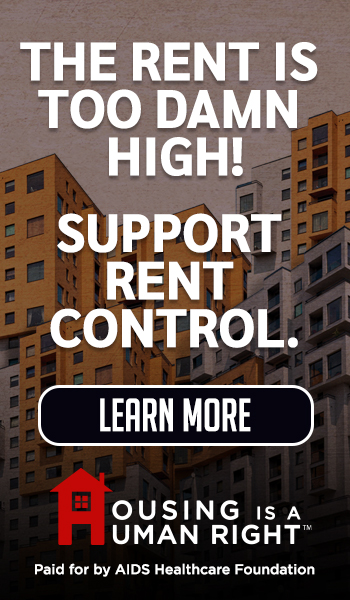Comments
iAUDIT! - I receive several online news feeds each morning, and I’ve noticed a growing trend is to package major stories in summaries like “Five Things to Start Your Day”. There’s been so much going on in the homelessness universe, I thought it might be a good idea to distill them into five core concepts readers can refer to when reading news stories. I’m going to spend the most space on the first concept since it’s at the root of the other four. The five concepts are:
1. It’s all about the process, not people
2. Nobody knows if homelessness decreased
3. Controlling the narrative--not reducing homelessness--is the goal
4. Reform is impossible because the Homeless Industrial Complex is real
5. There are solutions
Here are more details on each subject:
1. It’s all About the Process, Not People
In December 2024, the Mayor’s office issued a press release about homelessness. In the release, her office claimed more than 23,000 people had been moved into temporary housing--“thousands more” than the year before the Mayor took office. The release also claimed permanent housing move-ins almost doubled compared to 2022. The release was full of self-congratulatory language about “turning the page” and taking bold action. The problem was almost none of it was true.
The day after the Mayor’s press event, the City Controller released an audit of shelter bed data showing serious problems with enrollments, exits, and bed attendance. The City has no central database to track bed availability. How, then, can the Mayor claim 23,000 people were moved into shelters when the city doesn’t know how many clients are in shelters?
The answer is that the City counts processes, not people. It may count the number of times it completed a shelter placement, but it has no idea if the person placed is new or has been in the system one or more times. This is neither a new nor isolated problem. A 2019 City Controller audit noted, “Repeated housing placements for the same person or family falling in and out of homelessness during a year are included in the [number of people sheltered] figure”. Six years later, nothing has improved. A 2025 study from the League of Women Voters of Greater L.A stated, “…neither the city nor the county, which work together in many ways in their approaches to homelessness, consistently track the housing trajectories of people who enter the homeless services system, specifically how they are placed, then exited, then placed again repeatedly across a variety of shelter or housing types in a “churning” cycle of placement and displacement from one temporary accommodation to another”. Even LAHSA admits permanent housing numbers include repeat clients. A footnote to its presentation slide on housing placements includes the caveat, “Data provided courtesy of County Information Officer. It is possible for one person to have multiple permanent housing placements in a year”.
The problem with counting processes is that a process is not an outcome. In a 2020 research paper on Housing First, social researcher Stephen Eide used this analogy: You wouldn’t conduct a review of a police department based on its adherence to processes for investigating murders. You would measure it based on a decrease in homicides. You shouldn’t measure homelessness programs on the number of processes it completes, but on how effective those processes are at reducing homelessness. By that measure, LA’s homelessness programs have been a miserable failure. And that brings us to the next news nugget.
2. Nobody Knows How Many Homeless People There are or If Homelessness Decreased
Continuing the theme of happy news from the Mayor’s office, a July 2025 press release bragged about a supposed two-year downward trend in overall and unsheltered homelessness. The press release claims a 17.5 percent decrease in unsheltered homelessness but makes scant mention of the miniscule reduction in overall homelessness. That’s probably because the reduction, if its real, is only about 3.4 percent, which is hardly impressive given the billions spent to achieve it. And we have no reason to believe there has been a reduction, since LAHSA’s PIT count has been plagued by inaccuracies for years. As I showed in last week’s column, the count has a reputation for undercounting the unhoused population, either through poor management or intentional manipulation. You can’t claim a reduction in homelessness if you don’t know how many homelessness people there are.
The press releases about homelessness highlight the next point: it’s about the narrative, not the reality.
3. Leaders and Advocate Groups Must Control the Narrative
In the absence of actual progress, local leaders and advocacy groups must rely on controlling the narrative. They cannot allow critical voices to gain traction. To control the narrative, Housing First advocates have placed supporters throughout the bureaucratic apparatus of homelessness programs. This has created a network of self-supporting narratives that prop up a failed system. The narrative consists of a simple message: homelessness is caused by a shortage of affordable housing, and the only solution is to create more housing--at taxpayer expense--to bring all homeless people inside. That is the driving force behind everything from Housing First to State Senator Scott Wiener’s deeply flawed SB-79 housing bill. Any report, opinion, statement, or study that shows the weaknesses in local government’s approach must be quashed, regardless of its validity or its source.
One example of the need to control the narrative is described in an op-ed I wrote for the Westside Current in August. After being invited to speak to the Venice Neighborhood Council, I found I was disinvited a couple days before the meeting. No substantive reason was offered, but I noted some VNC members are aligned with advocacy groups like Knock LA and the large corporate nonprofits that benefit from the status quo. This kind of interlocking membership is common throughout the homelessness program structure, and the result is the exclusion of any dissent, even if it comes from one person at a single Neighborhood Council meeting. Press releases from nonprofits, the City, County, and LAHSA are virtually interchangeable, using the same verbiage and repeating the same messages. This interlocking structure is central to the fourth concept: The existence of the Homeless Industrial Complex is preventing real reform.
4. The Homeless Industrial Complex Prevents Reform
I generally avoid the use of the term Homeless Industrial Complex because it carries conspiratorial undertones. I prefer The Homelessness Trust to describe how public agencies, nonprofits, and advocacy groups share leadership so they can perpetuate the current system. A good example of the Homelessness Trust is the leadership group that provides policy recommendations to the board controlling Measure A funds. That group includes the CEO of one of LA’s largest homelessness nonprofits, LA Family Housing; she will be making funding recommendations that will directly benefit her NPO. Other members include Lourdes Castro-Ramierz, the head of LA’s Housing Department, who as chief of homelessness last year, said the City must follow a policy of “relentless outreach” to bring people inside, thereby writing outreach providers a blank check to bill for an unlimited number of “contacts” regardless of outcomes. Other Boards and Commissions have the same make-up. LAHSA’s Commission, with one or two exceptions, consists of members of advocacy groups and PR firms that support them, yet has no member who is a medical professional specializing in mental health or addiction services. Sarah Mahin, whom the County Board of Supervisors recently chose to lead the newly created County Homelessness Department, is a former LAHSA executive. On the County’s side, Amy Perkins is Supervisor Horvath’s chief of homelessness programs. She’s spearheading a possibly illegal transitional housing development on VA property for Ms. Horvath. Her career is a continuous cycle of working for all the agencies plagued by a lack of performance. Before working for Supervisor Horvath, she worked for LAHSA’s Housing Central Command, and before that she worked as Mayor Garcetti’s director of Bridge Housing. She’s also headed training for LAHSA’s outreach teams (and we know their track record). Ms. Perkins came out of the same milieu as so many other public agency leaders; she was Director of Strategic Partnerships at the large nonprofit LA Family Housing. In other words, she’s spent her career working for the agencies that have perpetuated the same failed policies for more than 20 years.
Despite claims of “bold action” and an end to business as usual, local agencies merely recycle leaders--and programs--from one agency to another. These agencies are doing things the same way they did them 20 or more years ago; they just call them different names. Everything is done to support Housing First policies, regardless of a large body of empirical evidence it doesn’t work. Neither the agencies nor the programs they operate can be reformed as long as the same people are managing them. This is not a comment on the ethics of these leaders; rather it is a consequence of the environment in which they gained their experience. The only thing these leaders understand is what’s been done before. The rigid structure of the Homelessness Trust means only those who hew to its precepts can move up; reform and innovation are heretical and must be driven out of the system. And that brings me to the final concept. If we can’t rely on current leaders to enact reform, where will change come from?
5. Reform is Possible
If we can’t depend on current leaders to reform LA’s homelessness system, who will lead the charge? There is no single answer to that question. Of course, we as voters bear the responsibility of electing leaders who advocate for real change. And there are successful programs we can use as models. In December 2024, I described how the South Bay Cities Council of Governments achieved “functionally zero” homelessness using a flexible program that includes family reunification and referrals to recovery services. Smaller nonprofits like Union Rescue Mission, SOFESA, and Solutions for Change individualize their programs to meet the needs of their clients rather than relying on the one-size-fits-all Housing First solution. These and similar programs can be adapted to LA’s diverse homeless population so they can meet the unhoused regardless of where they are.
Change may also be coming from outside and above. Over the past few months, the State of California has passed new laws to make it easier for cities to address homelessness, like the recent law regarding removal of derelict RV’s. And then there’s the Trump Administration’s new HUD funding policy that emphasizes recovery and integration over Housing First. The new policy could be a powerful motivation for change, if it comes with funding for mental health and addiction recovery services, something we have yet to see. Clearly, there are people outside Los Angeles who understand the need for fundamental reform; we have yet to see if local leaders embrace reform or continue to resist it.
These five concepts encapsulate everything wrong with LA’s homelessness system and why it seems nothing improves. We should keep these in mind the next time a leader makes a grand pronouncement about homelessness yet offers few details. And we should remember they represent the dogged defense of a system that leaves 75,000 people on our streets every night.
(Tim Campbell is a longtime Westchester resident and veteran public servant who spent his career managing a municipal performance audit program. Drawing on decades of experience in government accountability, he brings a results-driven approach to civic oversight. In his iAUDIT! column for CityWatchLA, Campbell emphasizes outcomes over bureaucratic process, offering readers clear-eyed analyses of how local programs perform—and where they fall short. His work advocates for greater transparency, efficiency, and effectiveness in Los Angeles government.)
















